Fourth Annual Day in Applied
Psychoanalysis
STRANGER IN A STRANGE
LAND:
PSYCHOANALYTIC
PERSPECTIVES ON EXILE
Saturday, October 16, 1999
George Ignatieff Theatre, 15 Devonshire Place,
Toronto
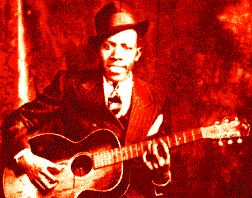
Robert Johnson
The Lonesome Highway: A Psychoanalytic
Appreciation of the Blues
Panel: G. Allen, D. Carveth, M. Cord, J. Hantman
Contributions by J. Hantman & D. Carveth
Don Carveth
In Beyond the Pleasure Principle (Trans. J. Strachey. New
York: Bantam, 1958, pp. 32-36) Freud (1920) writes of his little grandson's
fort! da! game:
... I have been able, through a chance opportunity which
presented itself, to throw some light upon the first game played by a little
boy of one and a half and invented by himself.
You will remember the significance of this period: Piaget located the
beginning capacity for "object permanence" (as distinct from "libidinal object
constancy") and Mahler posited the "rapprochement crisis" at 18 months.
... This good little boy ... had an
occasional disturbing habit of taking any small objects he could get hold of
and throwing them away from him into a corner, under the bed, and so on
... As he did this he gave vent to a loud, long-drawn-out "o-o-o-o",
accompanied by an expression of interest and satisfaction. His mother
and the writer of the present account were agreed in thinking this was not a
mere interjection but represented the German word "fort" ["gone"]. I
eventually realized it was a game and that the only use he made of any of his
toys was to play "gone" with them. One day I made an observation which
confirmed my view. The child had a wooden reel with a piece of
string tied round it. It never occurred to him to pull it along the
floor behind him, for instance, and play at its being a carriage. What
he did was to hold the reel by the string and very skillfully throw it over
the edge of his curtained cot, so that it disappeared into it, at the same
time uttering his expression "o-o-o-o". He then pulled the reel out of
the cot again by the string and hailed its reappearance with a joyful "da"
["there"]. This, then, was the complete game--disappearance and
return. As a rule one only witnessed its first act, which was repeated
untiringly as a game in itself, though there is no doubt that the greater
pleasure was attached to the second act.
The
interpretation of the game then became obvious. It was related to the
child's great cultural achievement--the instinctual renunciation (that is, the
renunciation of instinctual satisfaction) which he had made in allowing his
mother to go away without protesting. He compensated himself for this,
as it were, by himself staging the disappearance and return of the objects
within his reach. ...
In a footnote Freud observes that the game of disappearance and return
may involve both self and object. In addition to the loss and refinding of
the object there is the loss and the refinding of the self:
A further observation subsequently confirmed this interpretation
fully. One day the child's mother had been away for several hours and on
her return was met with the words "Baby o-o-o- o!" which was at first
incomprehensible. It soon turned out, however, that during this long
period of solitude the child had found a method of making himself
disappear. He had discovered his reflection in a full- length mirror
which did not quite reach to the ground, so that by crouching down he could
make his mirror-image "gone".
The fort! da! game underlies diverse dimensions of human
experience. It is fundamental to the understanding of music, as the
following passage from E.M. Forster's (1910) Howards End (London:
Edward Arnold, pp. 32-36), composed some 10 years prior to Beyond the
Pleasure Principle, makes clear:
It will be generally recognized that
Beethoven's Fifth Symphony is the most sublime noise that has ever penetrated
into the ear of man. ... "... [L]ook out for the part where you
think you have done with the goblins and they come back," breathed Helen, as
the music started with a goblin walking quietly over the universe, from end to
end. Others followed him. They were not aggressive creatures: it
was that that made them so terrible to Helen. They merely observed in
passing that there was no such thing as splendour or heroism in the world.
After the interlude of elephants dancing, they returned and made the
observation for the second time. Helen could not contradict them, for,
once at all events, she had felt the same, and had seen the reliable walls of
youth collapse. Panic and emptiness! Panic and emptiness!
The goblins were right.
Her brother raised his finger:
it was the transitional passage on the drum.
For,
as if things were going too far, Beethoven took hold of the goblins and made
them do what he wanted. He appeared in person. He gave them a
little push, and they began to walk in major key instead of in a minor, and
then--he blew with his mouth and they were scattered! Gusts of
splendour, gods and demi-gods contending with vast swords, colour and
fragrance broadcast on the field of battle, magnificent victory, magnificent
death! ...
And the goblins--they had not really been
there at all? They were only the phantoms of cowardice and
unbelief? One healthy human impulse would dispel them? Men like
the Wilcoxes, or President Roosevelt would say yes. Beethoven knew
better. The goblins really had been there. They might return--and
they did. It was as if the splendour of life might boil over and waste
to steam and froth. In its dissolution one heard the terrible, ominous
note, and a goblin, with increased malignity, walked quietly over the universe
from end to end. Panic and emptiness! Panic and emptiness!
Even the flaming ramparts of the world might fall.
Beethoven chose to make all right in the end. He built the ramparts
up. He blew with his mouth for the second time, and again the goblins
were scattered. He brought back the gusts of splendour, the heroism, the
youth, the magnificence of life and of death, and, amid vast roarings of a
superhuman joy, he led his Fifth Symphony to its conclusion. But the
goblins were there. They could return. He had said so
bravely, and that is why one can trust Beethoven when he says other
things.
In The Dynamics of Creation (London: Secker & Warburg,
1971, p. 117), Anthony Storr writes:
... the return of a theme in a piece of
music may give us intense delight; of course it is not until we know the
themes well enough to recognize them that we can experience this, especially
if the return is delayed. One device which composers use is to
state a theme unequivocally and then repeat it so that it is well established
in the mind of the listener. Then, instead of repeating it again at a
point where this might be expected, the composer proceeds to prevaricate, and
heighten the tension of expectation by altering the original rhythm, harmony
or tempo in such a way that the pattern seems almost shattered. When the
original theme finally does return, our relief at order being restored is all
the greater.
The peculiar thing about the blues as a musical form is how little such
prevarication there is. Blues music is almost all theme and no, or very
little, variation. It is mostly da! and very little
fort!--very little departure, or departure only a little way from
home, then a quick return. But while the music itself is entirely
reassuring, entirely predictable, never straying very far from home
(da!), its lyrics are all about "trouble in mind," "Panic and
emptiness!"--depression, anxiety, betrayal, grief and loss
(fort!).
Trouble in Mind
(traditional)
Trouble in mind,
Lord, I'm blue
But I won't be blue always.
You
know the sun's gonna shine
In my back door one day.
Trouble in mind,
I'm blue,
My poor heart's beatin' slow.
I ain't
never had so much trouble
In my doggone life before.
My good girl,
She's gonna quit me.
It sure does grieve my mind.
Sometimes I feel like livin',
And again I feel like cryin'.
Trouble in mind,
I'm blue,
I almost lost my mind.
Some times I
feel like livin'
And again I feel like dyin'.
I'm gonna lay my head
On some lonely railroad iron,
Let that big old
2:19
Pacify my troubled mind.
If I'd a' listened to my mother,
I wouldn't be in the shape I'm in.
But she told me once,
I said it was wrong,
And I got the blues.
I'm goin' down by the river,
Gonna take me a rock n' chair.
If this
trouble don't leave me
Gonna rock on away from here.
The ordered and predictable quality of Blues music assists in the containment
and processing of such depressive and persecutory anxieties. This music
"holds" and soothes us while we attempt to "bind" anxiety and engage in what
Freud called sublimation and the work of mourning. If Blues music helps to
calm our troubled minds--which it clearly does--then it accomplishes this less
through what Melanie Klein called a manic defense against persecutory and
depressive anxieties than through their progressive symbolization.
Paranoid-schizoid symbolic equations (beta elements) can be elevated into
depressive position symbolic representations (alpha processes) through the
avenue of verbal discourse, as in the traditional understanding of
psychoanalysis as a "talking cure." But as one of us has argued elsewhere
(Leaving Development to
the Developmentalists: Sticking to What We Know in Psychoanalysis), our
overvaluation of verbalization as "people of the word," has led us to downplay
the fact that a similar transformation can be effected through nonverbal
symbolization, as in music, dance, visual art and other symbolic forms,
including the non-discursive elements of the psychoanalytic process
itself. Of course, much Blues music involves verbal in addition to
nonverbal symbolization. In putting mental pain into music and words it
serves to "pacify the troubled mind" in a way that many may consider preferable
to either Paxil or that big old 2:19.
Jean Hantman
The thing about blues musically is that it doesn't really go anywhere.
Mostly it stays pretty close to home, "home" in musical language being the key
the song is written in. This characterizes both the harmonic composition
and lyrics, and much of the melody. Blues travels from Chicago back to
Memphis, Memphis back to Louisiana. Not Paris back to New York, which is
jazz, not America back to Africa, which is history.
Here are the lyrics to a song by Whispering Smith, vocalist and harpist from
Louisiana:
I love you baby,
I love you with
all my heart.
I love you baby,
I
love you with all my heart.
Oh I love you baby,
I love you,
I love you with all my
heart.
Second verse:
I need you baby,
I need you by my
side.
I need you baby,
Oh I need
you by my side.
I need you,
I need
you,
I need you by my side.
This type of lyric, shadowing with words the path the chords take, resembles
the literal steps of a child in Mahler's rapprochement sub-phase of
separation-individuation.
Mahler's Third Subphase -- Rapprochement
(16 to 24
months)
Infant now a toddler -- more aware of physical separateness,
which dampens mood of elation
Child tries to bridge gap between himself and mother--
concretely seen as bringing objects to mother
Mother's efforts to help toddler often not perceived as helpful,
temper tantrums typical
Characteristic event: rapprochement crisis. Wanting to be
soothed by mother and yet not be able to accept her help
Symbol of rapprochement: child standing on threshold of door
not knowing which way to turn in helpless frustration
Resolution of crisis occurs as child's skills improve and child
able to get gratification from doing things himself
Typical Blues Chord Progression
I IV I I
IV IV I I
V IV I I
In the language of music, "I" (roman numeral I) is referred to as "home" so
for instance a song
written in the key of "C" (where I is C major) will come
"home" to C major at the end of the
song, and most usually will also begin
with C major.
C D E F G A B C
One (C in the key of C), (home, mother)
Four (F in the key of C), (a bit away from mother)
Five (G in the key of C), (farther away from mother where it hurts so bad
because musically "V"
needs more than any other note in the scale to
resolve, to come back home, to mother-I.
In the early days of blues a song left home maybe once in twelve bars, for
example:
A Not Uncommon Blues Progression
I I I I
I I I I
I I I I
I I IV I
Philadelphia Blues "Hotline"
668-4371 which is (MOTHER-1)
In the song by Whispering Smith above, he starts out with Mama (I). He walks
a bit away from the mother (IV) and comes back to her (I) and gives her a hug
(I). He walks a bit away for a little longer (IV) (IV), then comes back (I), and
gets a hug (I).
Then he walks a bit farther than ever before (V). It's tense so far from
mother in a soaring, exciting and frightening way and he toddles (IV) back to
mother (I) for a big hug (I).
In a song by Son House he tells us about his lady being taken away on a train
(I) (IV)(I)(I) (we don't know why) and there's nothing (IV)(IV) he can do about
it (I)(I). The mean conductor blows the whistle (V) and the mean fireman rings
the bell (IV) and there goes his lady on a train (I) he's not allowed to get on
(I). After the twelve bars played with the usual chord progression he
spends an unaccountable number of bars hanging around (I) singing words that are
not audible, muttering, too sorrowed to speak and too broke up to leave home
(I).
Africans were scooped up, dumped and enslaved, as a people traumatized beyond
our imagination. In one of the purest sublimations in the history of human
society a musical form was created that communicates the pain of this perverted
yanking away from home (a permanent and involuntary exile).
At the same time, early blues unconsciously disguised the true nature of the
music from the slaveowner enough to get away with being allowed to sing. The
white slaveowner, in order to assuage his absent conscience (or more likely to
calm his fears of insurrection) could say, "Listen to that nice singing. See?
they're having a good time, we're not so bad". So the music of sorrowful
dissatisfaction was allowed voice.
This might be an explanation for the origin of the mixture of joy and tension
in blues. The joyful aspect has at least two purposes: to keep the white
slaveowner from forbidding the music and to receive the gift of successful
sublimation. What a successful sublimation provides is a reason to go on living
through the hell that living is.
There is no blues song which doesn't have an underlay of tension, pain and
sorrow no matter what the lyrics are, no matter how fluid the performance, how
joyous the musicians. As it reflects an ideal sublimation blues suffuses the
listener with energy and delight simultaneously conveying trauma through its
musical structure. Jazz has also provided a pure sublimation for those thrown
into imposed exile but its musical form evolved differently and unfortunately we
don't have time for the differences. I can tell you though that jazz consorts
with the white man's music a great deal, while blues does not.
And so for blues fans this musical form is a thrilling and soothing companion
for the slaves we all are, and for the incredibly gifted kid we are, pushed into
a dangerous world, before we're ready and against our will, with no hope in
reality of toddling back home, each song the wistful expression of a relaxed
rapprochement we were denied.
Blues For The Blues
Woke up this mornin’
First thing I thought
‘Last night, did I do what
I ought or ought not?’
With relief, I remembered
‘Now I recall:
Heard the worst blues ever
The worst blues of all.’
Weren’t Lucky’s fault
He weren’t lucky at all
Sound crew screwed up
Un-pro-fess-ion-AL
Happenin’ mo’ and mo’ often
The blues is goin’ down
Kids all rappin’ and scratchin’
No concept of ‘sound’
Great bluesmen dyin’
Soon to be gone
No one replacin’
Blues hard to be found
Warmdaddy’s in Philly
Rosa’s Chicago
New York has nada
Silver Dollar Toronto
But even the best
Serve their blues watered down
With rock, soul and funk
Pure blues can’t be found
“Nothin’ but the blues”
Was the Dollar’s proud claim
But now it’s “the best”
So their logo proclaims
But this “best” ain’t the blues
The blues is the best
Toronto’s Kendall, Dekyzer …
You can have all the rest.
I’ve still got my records
The Kings are alive
Greeny’s still young
In my mind, so am I.
Lyrics by Don Carveth © 2009
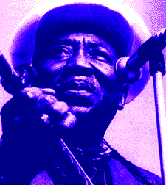
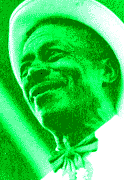

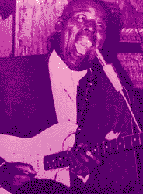
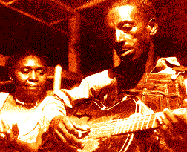
Muddy
Waters Son House Robert
Johnson Howlin'
Wolf
Fred McDowell
Home | Publications | Reviews | Practice | Courses | Psychoanalysis | Existentialism | Religion | Values | Blues | Links





